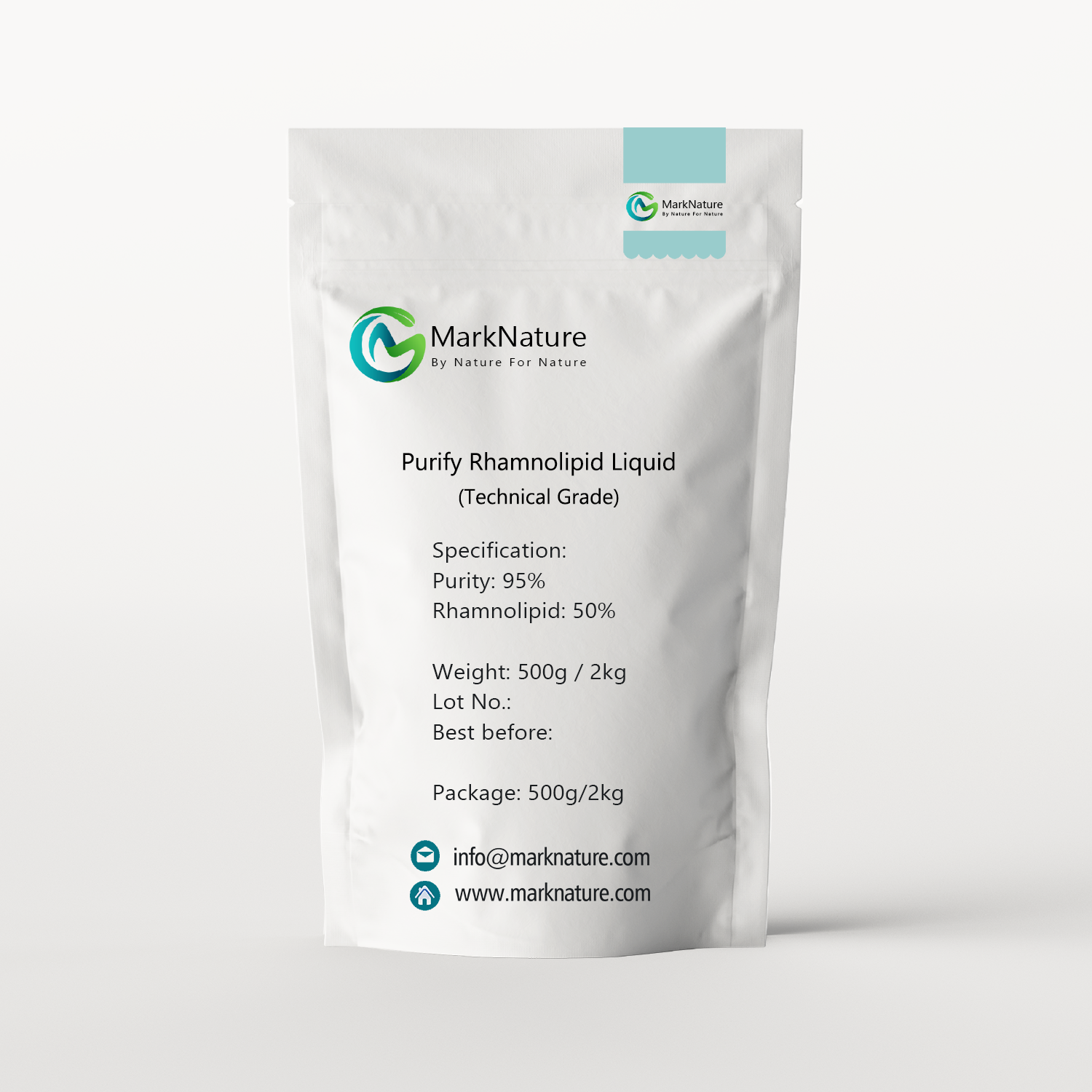Descripción
MarkNature's Rhamnolipid Biosurfactant is a versatile and technical-grade solution suitable for various agricultural applications. Derived from Pseudomonas aeruginosa, this biosurfactant offers a range of benefits, functioning as a wetting agent, dispersant, emulsifier, and aiding in cleanup and bioremediation processes.
Rhamnolipids are a unique class of biosurfactants known for their multifaceted properties, and they are composed of rhamnose sugar linked to β-hydroxylated fatty acid chains. This composition allows them to be widely utilized in industries such as petroleum, food, agriculture, and bioremediation due to their adaptability and effectiveness.
Key Components:
- Monorhamnolipid (Rha-C10-C10, M.W.: 504 Da), CAS No.: 37134-61-5
- Dirhamnolipid (Rha-Rha-C10-C10, M.W.: 650 Da), CAS No.: 4348-76-9
Specification:
- Appearance: Brown viscous liquid
- Purity: 95% min. (dry basis)
- Rhamnolipid: 50% min.
- Surface Tension (mN/m): 35 max.
- pH (10%): 6~8
- Solubility: Water-soluble
Applications:
Rhamnolipid biosurfactant is non-toxic and environmentally friendly, making it suitable for various applications, including agriculture. In agriculture, it offers several advantages:
1. Enhanced Nutrient Absorption: Rhamnolipids reduce surface and interfacial tension, promoting nutrient absorption by plants and increasing fertilizer efficiency. Field experiments have demonstrated a reduction in fertilizer consumption without compromising efficacy.
2. Soil Remediation: Rhamnolipids improve soil permeability and the micro-ecological environment, alleviating soil compaction and contributing to soil remediation.
3. Chelating Function: The double carboxyl structure of rhamnolipids allows them to chelate and fix middle and trace elements around the root system, enhancing fertilizer efficiency and promoting plant growth.
4. Biodegradable: Rhamnolipids are biodegradable and environmentally friendly, causing no secondary pollution.

